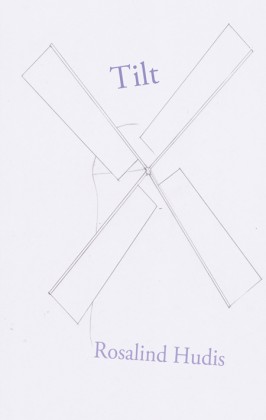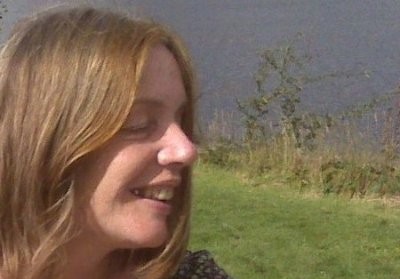 Cinnamon Press, 80 pages, £8.99
Cinnamon Press, 80 pages, £8.99
Ezra Pound once famously said that ‘music begins to atrophy when it departs too far from the dance… poetry begins to atrophy when it gets too far from music’.
‘Atrophy’ is not a term that could be used in connection with Rosalind Hudis’s accomplished debut collection. A professional musician and songwriter for over twenty years, Hudis brings to her poetry a powerful lyricism and tightly-controlled sense of structure in which the synergy of music and language are fused to a compelling entity. The title, Tilt, reflects the slant of our existence, “a glitch in the smooth running chain”. The world is seen at an angle, “turns for the twist of it”, perhaps, and when the poet says “And to think like this/ is to make anything permissible”, it is a bold and confident statement of intent that the reader happily embraces within the collection. From this perspective Hudis gives us a wide-ranging viewpoint: poems about the women of her childhood, artists such as Rothko and Nash, cattle-culling in Powys, an astronaut’s wife seeing her husband off on his mission and later, waiting anxiously for news reports, mindful of the “impossible statistic of his return”.
Whilst the landscape of Wales features as a backdrop to this collection, in poems such as ‘Llyn Brianne’, ‘Summer in Powys’, ‘Skomer’ and ‘Mynydd Bach’ (here, meadowsweet notably “memoried with owl”), the landscapes Hudis evokes are also personal ones of family, heritage and self. In ‘Pact’, for example, a grandmother and grand-daughter compare scars: “although the grandmother, being eighty,/ has a landscape after rain,/ the grand daughter, being nine,/ only surface”
In a recent interview for Poetry Wales, Hudis talks of her awareness of time and process reflected in the landscape, an awareness that encompasses the historical and industrial, and of using nature as a metaphor for life events in order to explore our relationship to place. We see this powerfully demonstrated in ‘Photograph’, where the poet is watching her child, who is about to undergo heart surgery, “one hand between the silvery poles/ of her cot, that remind me of birch trees… the surgeon will snap her ribs/ to reach a heart which can’t wake/ itself properly inside its blue forest”.
At the heart of the collection are Hudis’s poignant and beautifully observed poems about her daughter, who was born with Downs Syndrome. Reminiscent- both in their simplicity and delicately-weighted language- of Rebecca Goss’s collection Her Birth, Hudis charts this journey from initial diagnosis in ‘Ultrasound’, where we see the baby has “a chromosome too many”, through to her daughter’s birth, “her sloped eyes the unpassing/ grain of her life”. The poems are tender but unsentimental, using sparse language and landscape imagery that, rather than excluding readers from such a personal experience, draws them in and invites them to share it: we are there with the poet at the hospital, watching as the baby “beats a fist,/ the size of a large bee, into air”, sympathising with her mother’s sense of impotence when “Later/ it’s I who can’t reach/ my child so far under,/ her face a locked, white egg/ in the thicket of tubes”. And in ‘Topography’, we celebrate with the poet as she watches her daughter “crackle her fingers/ over the surface of a map she has opened”, find hope for the future when she “paints in the chiaroscuro/ episodes of a self she will be”.
Where Hudis is particularly strong is in her use of multi-layered and frequently stunning imagery. In ‘Cheap Pianos’, for example, the keys of one piano are covered in stress-cracks, “like party nails eroding/ weeks after the event”: another piano seems “too stern/ for its small iron bones,/ all black-stained mahogany/ thick as scripture……mothy/ and thinned as an old heart”, lines in which Hudis consciously echoes the lyricism of Dylan Thomas and the heritage of Anglo-Welsh writing with which she is so familiar. In ‘The Women of My Childhood’, “Their hands vanish into bowls/ that loom like chapels” and further on, we see their “reel of bones/ under house-coats”. This is precise and ambitious imagery that lifts the poems away from ordinary subjects and gives them new life, imbued with the history and sense of place of their surroundings, yet always grounded within a carefully-crafted narrative.
Whether using a loose sonnet form, such as ‘Photograph’, or the free-verse form of ‘Ascension’, Hudis’s intrinsic use of rhythm and meter make for satisfyingly structured pieces where the narrative voice is always allowed to shine through. Her consciousness of the power of words and their political, historical and cultural resonances are at the heart of many of the poems, and she often employs a highly effective fusion of language and the physical environment. In ‘Language Death’, for example, she writes that “The Speech won’t crumble fast; its vowels will break bread/ between gums the way tectonic plates/ will go on speaking and shifting/ the world’s long gossip/ It will burrow for millennia if it has to, / in grit-stone, slag, a hare’s pellet/ below smoking heather,/ take the shape of what’s to hand”.
There are many poetry collections gathering dust on my shelves, their contents now largely unread. Tilt, however, is a book I will return to many times:
But what I want to confess to
is enchantment- how held I am,
hostage in my own womb,
watching the signs for child
leap like floodlit salmon,
their rebel arc. [from ‘Ultrasound’]
I confess too: that enchantment, the beautiful matching of image and thought, music and word, is what will keep me turning these pages for many years to come.











